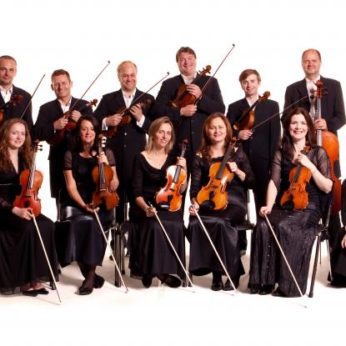Composer: Béla Bartók (b. 1881 - d. 1945)
Performance date: 03/07/2012
Venue: St. Brendan’s Church
Composition Year: 1939
Duration: 00:25:24
Recording Engineer: Anton Timoney, RTÉ lyric fm
Instrumentation Category:Full/Chamber Orchestra
Artists:
Irish Chamber Orchestra -
[orchestra]
Paul Watkins -
[conductor]

Bartók’s Music for Strings, Percussion and
Celesta was the first of three commissions by Paul Sacher, founder and
conductor of the Basle Chamber Orchestra. After it received a rapturous
reception at its premiere in 1937, it quickly found a home in the mainstream
repertoire. Other Sacher commissions followed, first the Sonata for two
pianos and percussion in 1937, and then in 1939 the Divertimento for
Strings. He thought that he would compose it as a kind of concerto grosso
with alternating ripieno (the full string body) and concertino (a solo
quartet), but this was the period just before war was declared – World War II
broke out fifteen days after he completed the work – and he found he could not
write in the entertaining, light-hearted 18th century manner. The outer
movements are full of charm and high spirits, but the core of the work is the
deeply moving, despairing, second movement with its cries of pain and allusion
to a funeral march. It is only the final movement that is closest in character
to the traditional divertimento genre.
The rapid advance of Nazism in the late 1930s had plunged Bartók into
a state of panic and withdrawal, and a frantic urge to complete his work
alternated with creative paralysis. Already in 1938 he was sending his
manuscripts to
for safe keeping. He was also deeply affected by his mother’s illness and death
at the end of 1939 and this combination of general and personal grief made him
determined to leave his beloved
There are melancholy quotations of a Hungarian character at the end of the
first and second movements of the Divertimento, and he often used
Hungarian themes and rhythms, as in the dotted rhythm fugato in the second
movement of the Divertimento The themes of the 2/4 final movement are
subtle transformations of those from the 9/8 first movement, and there is an
ironic Bartók joke, a delicious pizzicato polka, before the whirling glissandos
at the end. The structure of the last movement is symmetrical, with a double
fugue at the centre, the strictness of which is resolved in a Gypsy violin
cadenza. The conductor Ferenc Fricsay has written that, unlike the music of
Beethoven’s Eroica, for example, the slow movement of the Divertimento
is the music not of objectified grief
but of inconsolable collapse. The
middle section is an implacable funeral march, above which we hear hysterical
weeping culminating in a cry of pain. The tragic truth stands before us, naked
in all its brutality.
Copyright © 2025 West Cork Music. All rights reserved.
Designed and developed by Matrix Internet